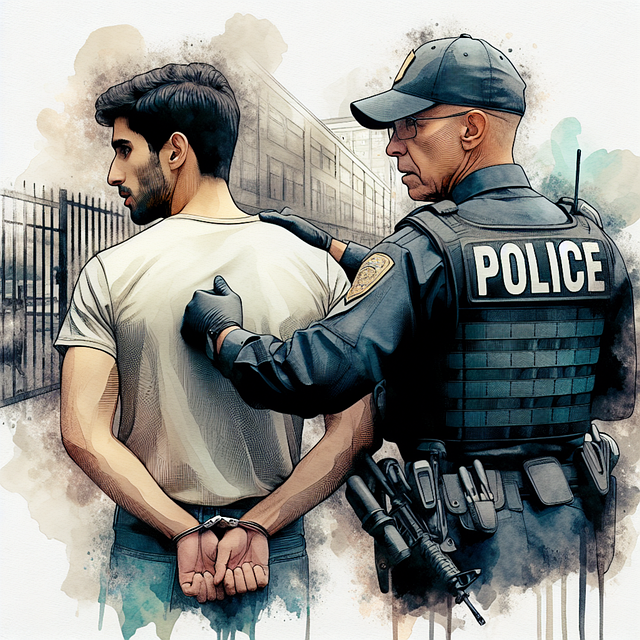Youth justice emphasizes rehabilitation and reintegration through fair treatment, with community service as punishment as a key strategy. This approach fosters responsibility, social skills, and community connections, reducing recidivism. Despite challenges in engagement and resource allocation, it's a global trend towards restorative practices, diverting youth from harsh punishments into community-based programs like Community Service as Punishment for skill development, restitution, and support.
Youth justice systems around the globe are increasingly focusing on fair treatment, emphasizing rehabilitation and restorative practices. This article delves into the concept of equitable youth justice, exploring how community service can serve as a powerful punishment and rehabilitation tool. We examine the benefits, challenges, and best practices associated with this approach, including strategies to navigate potential hurdles. By understanding these aspects, we contribute to shaping more effective and just systems for young offenders.
- Understanding Youth Justice and Fair Treatment
- The Role of Community Service in Rehabilitation
- Challenges in Implementing Community Service Punishments
- Best Practices for Ensuring Equitable Youth Justice
Understanding Youth Justice and Fair Treatment

Youth justice is a complex field focused on addressing the unique challenges faced by young people who come into conflict with the law. It emphasizes rehabilitation and reintegration, aiming to break the cycle of criminal behavior while ensuring fair treatment. Fair treatment in youth justice involves considering age, developmental stage, and individual circumstances, promoting restorative practices, and minimizing the use of harsh punishments.
One aspect that underscores this principle is the role of community service as punishment. Instead of isolating young offenders, community service allows them to contribute to their communities while learning accountability. This approach fosters a sense of responsibility, enhances social skills, and builds connections within the community, ultimately supporting their reintegration and reducing recidivism rates.
The Role of Community Service in Rehabilitation

Community service, often seen as an alternative form of punishment for youthful offenders, plays a pivotal role in rehabilitation. It provides a structured environment where young individuals can learn valuable lessons about responsibility and contribute to their communities. Unlike traditional detention centres, community service allows for a more holistic approach by focusing on the individual’s growth and reintegration.
Through acts of service, youth gain firsthand experience of the impact of their actions on others, fostering empathy and a sense of social accountability. This hands-on learning is particularly effective in shaping their future behaviour as they witness the positive outcomes of their contributions. Moreover, community service connects young offenders with supportive communities that can offer guidance, mentorship, and opportunities for personal development, thereby reducing the likelihood of reoffending.
Challenges in Implementing Community Service Punishments

Implementing community service as a punishment for young offenders presents several challenges. One of the primary hurdles is ensuring meaningful engagement and impact. Often, youth may view community service as a mere chore, lacking the structure and guidance needed to foster personal growth and social responsibility. This can lead to low motivation and subpar outcomes, defeating the purpose of such sentences.
Additionally, resources and coordination are vital for effective community service programs. Local governments and organizations must collaborate to offer meaningful opportunities that align with youth interests and skills. Poor communication or a lack of available resources can result in poorly structured activities, frustrating both the young individuals involved and the communities they’re supposed to serve.
Best Practices for Ensuring Equitable Youth Justice

Youth justice systems around the globe are increasingly recognizing the importance of fair treatment and rehabilitation for young offenders, moving away from harsh punishment towards more restorative approaches. To ensure equitable youth justice, several best practices have emerged as key strategies. One prominent approach is diverting youth from traditional criminal justice systems whenever possible. This involves redirecting them towards community-based programs, such as Community Service as Punishment, which offers opportunities for restitution and skill development while keeping them within supportive communities.
Community Service as a form of punishment not only reduces recidivism rates but also empowers young individuals to contribute positively to society. It allows them to learn from their mistakes in a controlled environment, gaining valuable life skills and a sense of responsibility. Additionally, involving the community in youth justice fosters a collective sense of ownership and support, which is crucial for successful rehabilitation and reintegration. This practice ensures that young offenders are treated fairly, given a second chance, and equipped with tools to become productive members of society.
Youth justice aims to balance accountability with rehabilitation, ensuring young people are treated fairly and given a chance at redemption. Community service as punishment offers a restorative approach, allowing individuals to contribute to their communities while learning valuable lessons. However, challenges such as uneven access to resources and potential stigma must be addressed. By adopting best practices that promote equity, including comprehensive training, diverse opportunities, and supportive supervision, we can create more effective and just youth justice systems that foster both personal growth and community strengthening.






